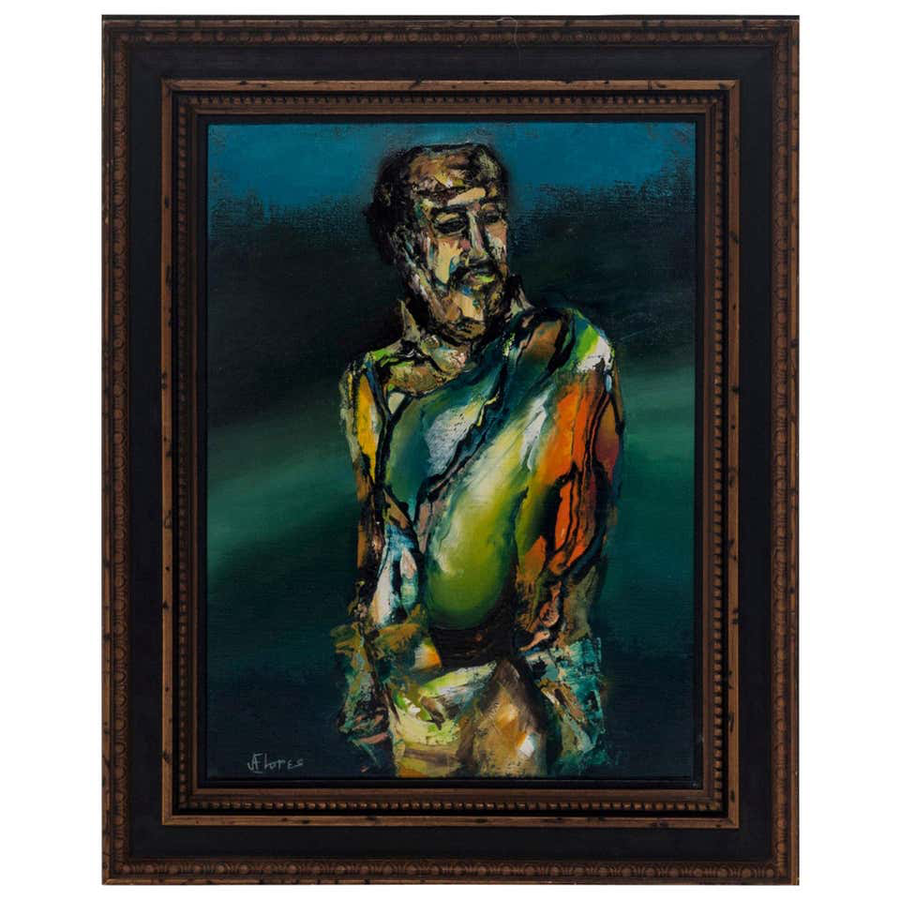Unveiling the Tricks Behind Expressive Figurative Oil Painting Styles
The Role of Emotion and Expression in Figurative Oil Painting: A Comprehensive Analysis of Subject and Structure
The interplay of emotion and expression in figurative oil painting serves as a critical lens through which one can check out the complex partnership in between subject matter and composition. Artists harness different strategies, from color choice to brushstroke characteristics, to cultivate psychological resonance within their jobs.
Comprehending Feeling in Art
Emotion in art functions as an effective conduit for expression, allowing musicians to convey complex feelings through their job. In metaphorical oil painting, this psychological depth is often depicted through the depiction of the human number, recording the nuances of human experience. The choice of subject matter, color combination, and brushwork all add to the emotional vibration of a piece.
Artists regularly draw upon personal experiences, societal concerns, or global styles to evoke feelings in the audience. A portrait may reflect vulnerability, while a vibrant number in movement can symbolize freedom or chaos. These psychological strings connect the viewer to the artwork, fostering a discussion that transcends the visual tool.
Moreover, the interaction in between light and darkness can intensify psychological intensity, leading the audience's stare and accentuating specific aspects within the make-up. The usage of appearance in oil paint better adds layers of complexity, inviting a responsive response that enhances the psychological experience. Generally, comprehending emotion in art is vital for valuing the subtleties that define metaphorical oil painting, as it changes simple depiction into an extensive exploration of the human problem.
Crucial Element of Structure
In the world of metaphorical oil painting, the composition works as the underlying structure that organizes aesthetic elements and improves the emotional narrative. Vital components of make-up consist of balance, comparison, focal point, and rhythm, each adding to the general influence of the art work.
Equilibrium describes the distribution of aesthetic weight within the painting, which can be accomplished via asymmetrical or in proportion plans. A healthy make-up gives security, permitting the viewer to engage with the piece harmoniously - figurative oil painting. Contrast, on the various other hand, includes comparing various components, such as light and dark or cozy and amazing colors, to lead the viewer's eye and evoke psychological reactions
The focal factor is critical, as it routes focus to the most substantial component of the painting, frequently highlighting the psychological core of the narrative. By skillfully integrating these crucial aspects, artists can craft compelling and mentally resonant figurative oil paintings that astound and involve their audience.
Subject and Its Impact
Subject plays a critical role in metaphorical oil paint, as it not just acts as the structure for the narrative but additionally shapes the viewer's interpretation and psychological engagement with the artwork. The option of subject matter-- be it a solitary figure, a group dynamic, or a thematic depiction-- straight affects the psychological environment communicated to the audience.

As an example, portraits often stimulate personal connections, revealing the intricacies of human expression and personality, while scenes portraying common activities can develop a sense of belonging or fond memories. Furthermore, the social and historical context of the topic enhances the customer's understanding, prompting deeper representations on social standards, worths, and the human condition.
Different topics likewise generate varying degrees of engagement; a remarkable dispute portrayed through numbers in tension may generate sensations of anxiety or compassion, while tranquil landscapes can invoke tranquility and contemplation. Ultimately, the influence of subject in metaphorical oil paint is profound, as it acts as an avenue for emotional vibration, directing the audience's feedback and analysis, and promoting a connection in between the viewer and the art work. This interplay is essential for the effective interaction of the artist's intent.
Strategies for Stimulating Feelings
The efficiency of metaphorical oil painting in conveying emotions is considerably influenced by the strategies employed by the musician. Among one of the most crucial techniques is using color theory, where the critical selection of hues can evoke certain emotional reactions. Warm shades, such as oranges and reds, commonly generate sensations of passion or aggression, while cooler tones like blues and greens tend to evoke peace or unhappiness.
An additional vital method is the control of light and shadow, called chiaroscuro. This method enhances the three-dimensionality of figures, developing dramatic contrasts that can increase psychological deepness. The positioning of light can direct visitors' feelings, highlighting specific aspects Your Domain Name of the composition.
Brushwork likewise plays a critical role; loose, meaningful strokes can convey power and spontaneity, whereas smoother techniques might recommend tranquility or precision. The arrangement of subjects within the make-up can affect psychological influence. Close distance can recommend intimacy, while range might indicate isolation.
Inevitably, the combination of these methods allows artists to craft stories that reverberate with the viewer, changing a simple visual experience right into an evocative psychological journey. - figurative oil painting

Study of Remarkable Functions
Examining notable jobs of figurative oil paint reveals exactly how numerous methods are used to stimulate effective emotions. One excellent situation is Edvard Munch's "The Scream," where the altered number and swirling history communicate existential dread. useful reference Munch's use color-- deep blues and dazzling oranges-- increases the emotional impact, showcasing exactly how palette selections can form visitor experience.
An additional considerable job is Pablo Picasso's "Les Demoiselles d'Avignon." Below, bold brushstrokes and fragmented forms reflect a turbulent emotional landscape, testing typical depictions of the female figure. Picasso's innovative make-up not just records the visitor's attention yet additionally invites contemplation on motifs of identification and sexuality.
Furthermore, Frida Kahlo's "Both Fridas" uses a touching exploration of duality and self-identity. The contrasting numbers, linked by a shared heart, exhibit Kahlo's psychological deepness and personal narrative. figurative oil painting. Her thorough interest to information and symbolic elements offer to involve viewers on a visceral level
These study underscore the extensive link between emotion and make-up in metaphorical oil painting, revealing exactly how artists harness strategy to connect intricate sensations and stories that resonate across time and society.

Conclusion
To conclude, the interaction of emotion and expression in metaphorical oil painting considerably improves the viewer's experience and analysis of the art work. Through a cautious selection of topic and compositional methods, musicians share extensive narratives that reverberate on both universal and personal levels. The application of shade theory, brushwork, and chiaroscuro further magnifies emotional depth, changing each canvas into an effective reflection of the complexities of the human experience.
In see here metaphorical oil paint, this emotional deepness is commonly represented via the representation of the human number, catching the nuances of human experience.Furthermore, the interplay in between light and darkness can magnify emotional strength, guiding the visitor's gaze and drawing attention to particular aspects within the make-up. The use of appearance in oil paint even more adds layers of intricacy, inviting a tactile feedback that enhances the psychological experience.The focal point is important, as it directs focus to the most considerable part of the painting, often highlighting the psychological core of the story. Ultimately, the influence of subject issue in metaphorical oil paint is extensive, as it offers as an avenue for psychological resonance, assisting the audience's reaction and analysis, and fostering a link in between the art work and the observer.